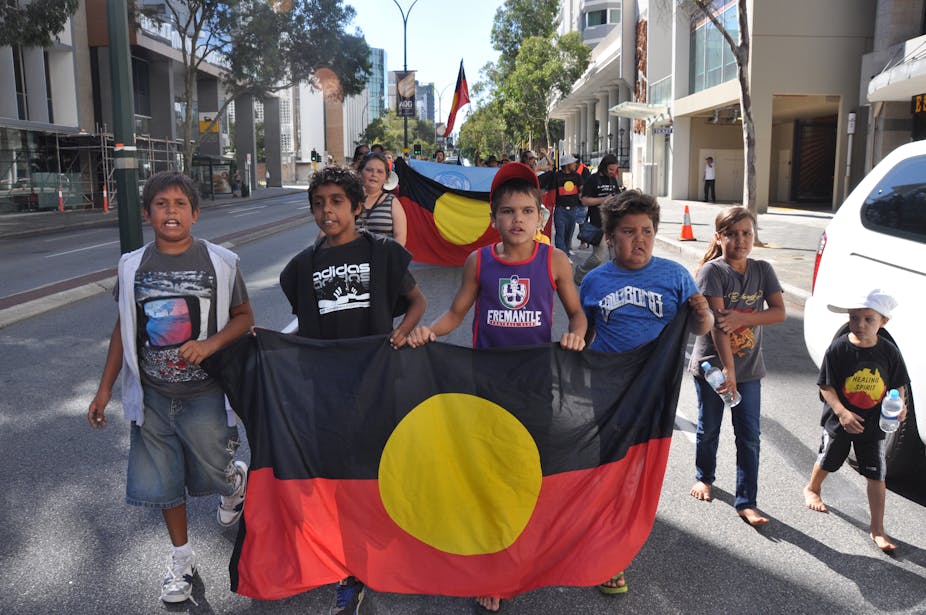The current negotiations over the Noongar native title claim in the south-west corner of Australia reflect an important maturing of the native title resolution process.
Beneath the photo opportunities and highly publicised dollar figure of around A$1 billion, much is happening that deserves deeper reflection. The history here is one of complex yet inconclusive litigation, years of discussion, and some well-publicised division in the Indigenous community. Yet emerging now is a comprehensive settlement package that breaks new ground in Australia for both governments and native title claimants.
The Noongar litigation that concerned significant parts of this claim wound its way through the Federal Court for some years. The Noongar history put this case at the sharp end of the self-conscious legal confusion that had been gathering ever since the Mabo decision, which recognised native title in Australia for the first time.
The central difficult question here was whether the Noongar community had remained sufficiently “traditional” to be successful. The politics were serious, given the value of the land and the involvement of a capital city. However, despite the familiar distant drumbeat from some parts of the media, no-one’s backyard was at stake. The vast amount of past legal “extinguishment” in this area - the past loss of native title essentially by reason of government grants over the land - was not in question.
In a 2006 Federal Court judgement, Justice Wilcox initially upheld the claim in a cavalier final judgment before retirement. He found that the legal threshold of cultural continuity had been met and that native title existed, subject to specific extinguishment, in Noongar hands. This was an incredible day for the local Indigenous community, and was met with considerable support in the broader community.
This initial opportunity to pull Australian native title into a positive and cooperative future was soon unstitched. The case was appealed, and the Full Federal Court considered there were errors in Justice Wilcox’s approach - in his lack of rigour on questions of continuity - that meant his decision had to be overturned, and that the matter reconsidered.
This sobering chapter in the courts again illustrated the heavy costs of litigating native title matters. It also highlighted the artificiality of addressing such important post-colonial questions in isolation from their social, historical and political significance. And it clearly demonstrated the uncertainty and irony of central aspects of the Australian native title doctrine. Amongst the many raw legal points re-exposed in the Full Federal Court decision was the issue of whether the reasons for loss of ‘tradition’ (inevitably western interference) could excuse it. The court considered not.
Yet a new opportunity arose from the ashes of the appeal and these uncomfortable lessons. No-one had the appetite to start the litigation process again, and the lingering uncertainty posed difficulties for business, agriculture and local and state governments.
The WA state government signed a Heads of Agreement for comprehensive negotiation with representatives of the Noongar groups in December 2009. The ensuing discussions covered the interests of 30,000 Noongar people and produced the current comprehensive settlement plan. This essentially involves a proposed surrender of all native title in exchange for a long-term cultural, social and economic development package. The package includes appropriate recognition of traditional ownership, the provision of a significant land base, specific housing initiatives and indexed monetary compensation and support for regional management corporations.
Ten years ago, the idea of a “surrender” would have choked most keen observers, and it must still be carefully discussed amongst Noongar communities and reconciled with broader political aspirations. However, the complexity and delays of the native title system, the effects of past extinguishment and the entrenched legal confinement of surviving rights all point clearly to the reality that a successful determination of native title here might produce little more than an expensive administrative burden.
Native title, or potential native title, is often traded to some extent under the Australian system. The idea of doing so to avoid the limitations and delays of the system has progressed somewhat with recent developments in Victoria. However, the Noongar negotiations are remarkable owing to their scale and the proactive and comprehensive approach acceded to by the WA state government.
Perhaps most importantly, these negotiations clearly signal the emerging reality that native title recognition may no longer be an end in itself. It may, for many communities, be an impractical and faded promise that is best left behind in the pursuit of lasting community advancement. At a recent national workshop, a prominent Indigenous lawyer from the eastern states offered the analogy of riding a very limited legal “bicycle” so far and so fast as is necessary to jump onto the bus.
There is both triumph and tragedy here. The limitations of the metaphorical bicycle left behind are now more obvious than before, and for various reasons this remains the vehicle for many native title claims across the country. The hope is that success in the Noongar negotiations might encourage a more holistic and forward-looking approach in other places where native title is a poor fit.

